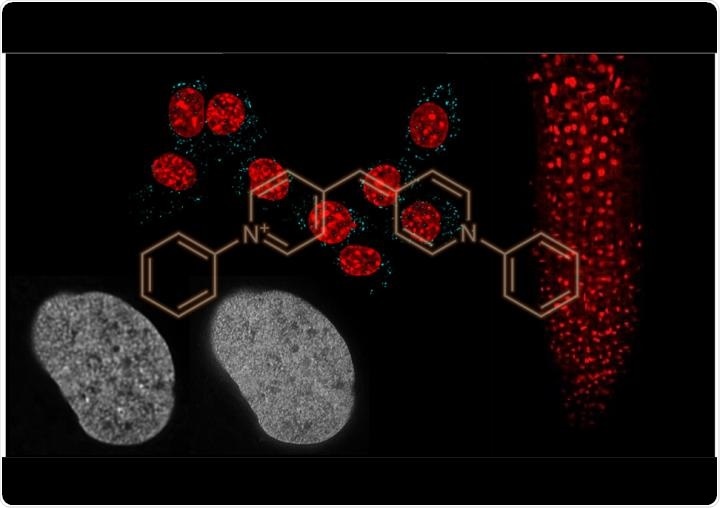A team of scientists at Nagoya University in Japan has invented an extremely versatile DNA fluorescent dye called “Kakshine,” which is named after a former NU student of one of its members, Dr. Kakishi Uno, but also means to make the nucleus shine brightly since the nucleus is spelled “Kaku” in Japanese.

Allowing discrimination between organelle DNA using low phototoxicity visible light, Kakshine offers easy imaging even with cutting-edge microscopy techniques. Image Credit: Yoshikatsu Sato.
Dr. Uno, along with Dr. Yoshikatsu Sato and Nagisa Sugimoto, the other two members of the research group from the Institute of Transformative Bio-Molecules (ITbM), successfully developed a DNA binding fluorescent dye with the pyrido cyanine backbone that fulfilled the three main qualities needed of such a dye: high selectivity for DNA, the potential to use visible light with limited phototoxicity, to be applicable to a diverse variety of species in ways that no prior dye has been.
Kakshine and its derivatives are highly compatible with cutting-edge microscope methods, which adds to the central set of functions needed for such a chemical. They are the first dye of its kind to obtain super-resolution imaging of mitochondrial DNA in living cells using STED imaging, a form of microscopy whose resolution exceeds the light’s diffraction limit.
They also allow for deep tissue imaging via two-photon excitation imaging, as well as discrimination of various organelle DNAs using a single dye via fluorescence lifetime imaging.
Kakshine is an extremely versatile new dyeing agent that enhances and corrects the shortcomings of current-generation fluorescent dyes in DNA imaging.
Furthermore, with applications in the life science and medical fields such as quantitative PCR, electrophoresis, and flow cytometry, Kakshine is expected to make a reputation for itself as the next-generation DNA analysis platform.
Source:
Journal reference:
Uno, K., et al. (2021) N-aryl pyrido cyanine derivatives are nuclear and organelle DNA markers for two-photon and super-resolution imaging. Nature Communications. doi.org/10.1038/s41467-021-23019-w.